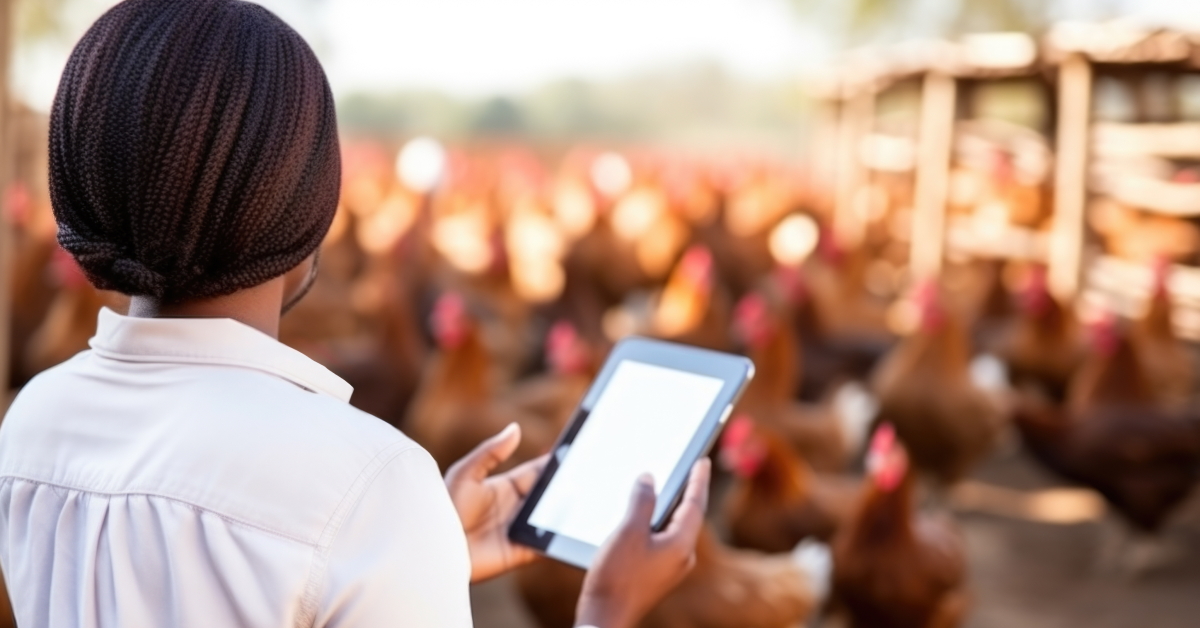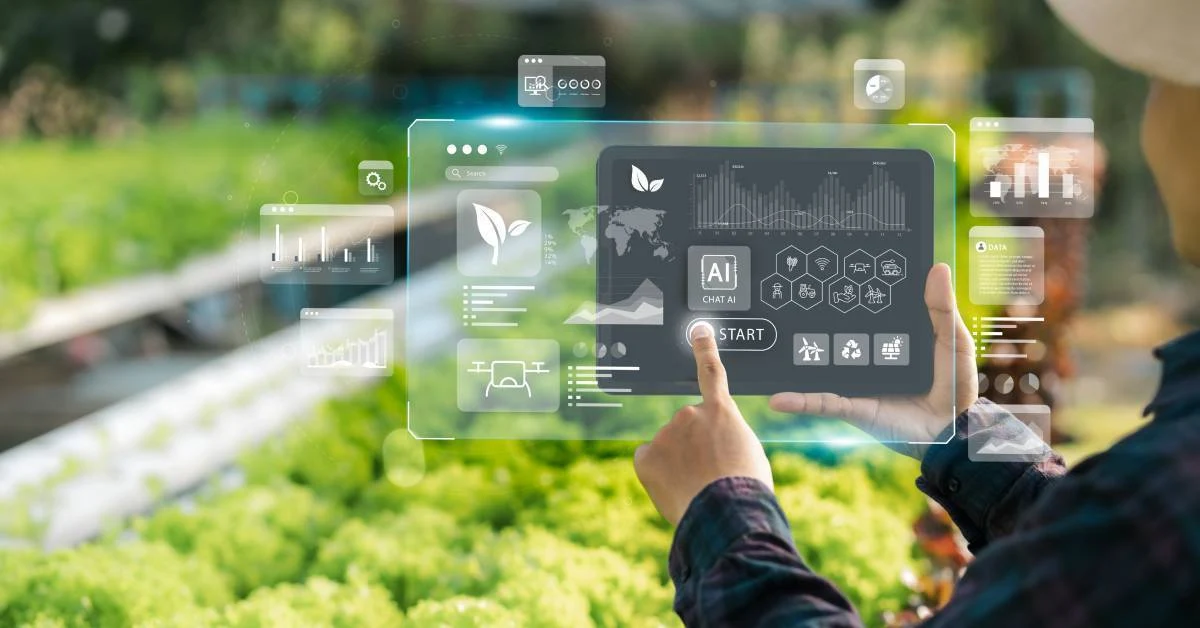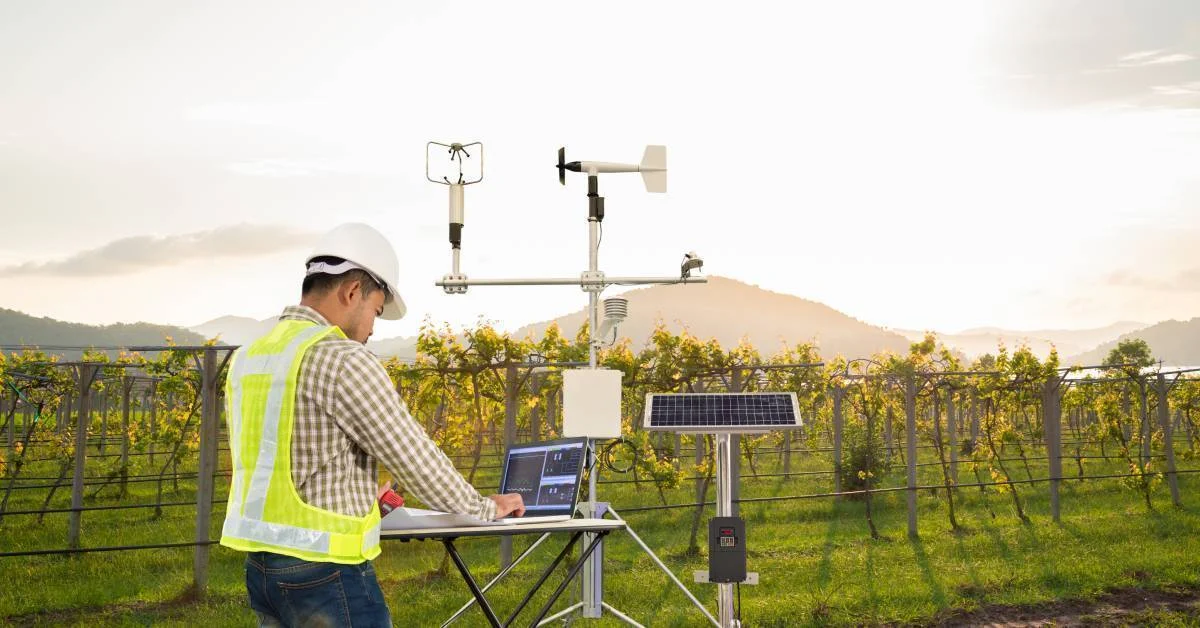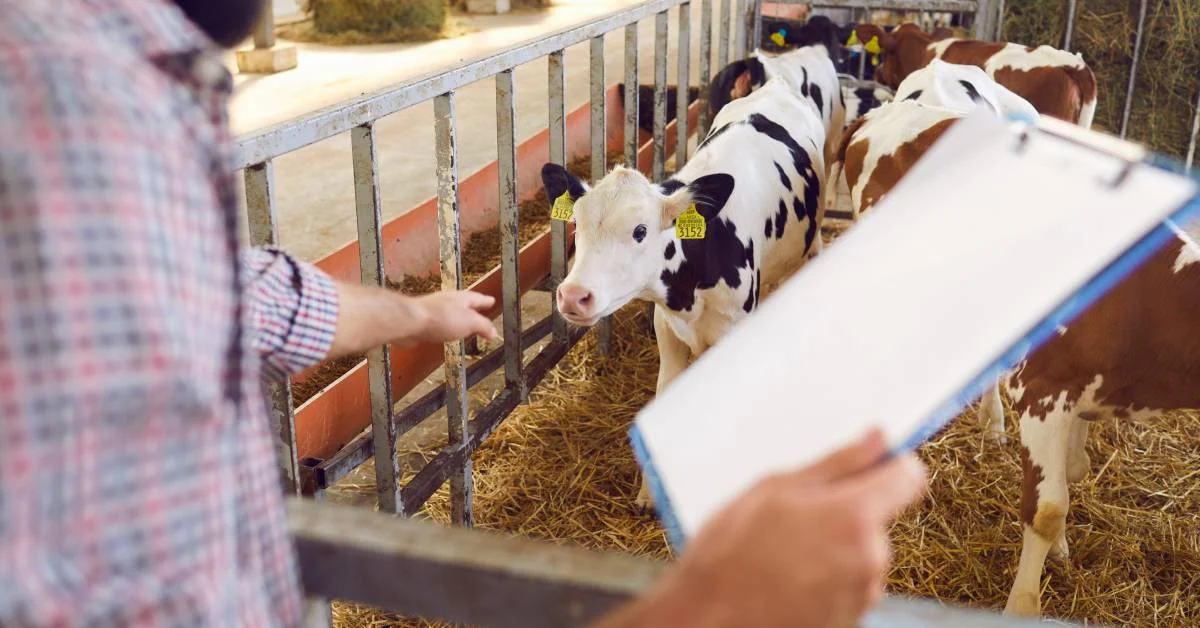Every cent matters in the poultry breeding world, and narrowing margins can happen in the blink of an eye. The search for profitability has to be the top priority, among other things—notwithstanding the slight increase in feed costs.
It will significantly impact the financial stability of the poultry farm. Therefore, the poultry industry is characterized by high risk, making it less profitable. Although grain prices and market demands are dynamically changing, poultry farmers face several issues as they struggle to achieve successful financial results.
Feed costs now tower above the roof, threaten the profit projections drawn earlier, and breathe down on farmers as they struggle to manage an economy where efficiency matters even in the smallest unit.
As mentioned, the repeated battles over bird diseases and mortality add another layer of complexity, as the farm’s bottom line is directly affected by the health of each bird. Offering a sizable production volume transforms into ambition and a requirement explained by the supply-and-demand dance that can lead to success or failure.
Yet, amidst these challenges lies an opportunity for transformation: the introduction of poultry software. With this technological breakthrough, farmers no longer need to search for answers to age-old problems.
Instead, these solutions come quickly with the prospect of a brighter future when profitability is not just a dream but an attainable goal. Data analysis is critical to productive labor management, and operational streamlining brings poultry software to the forefront as the fundamental pillar of success in the advanced farming environment.
How Poultry Software Boosts Profitability
Reduce Feed Costs Through Optimized Feeding Plans:
Poultry software is a great tool that helps to pursue profitability by providing customized feeding plans that are attentively blog-drafted to fit specific poultry farming needs. This ability is based on the software’s proper inclusion of different parameters. Consequently, the poultry breeding software conceives feeding strategies specific to individual flocks.
1. Bird age and type (broilers, layers, etc.)
Firstly, these considerations point towards developing the mentioned plans by selecting the appropriate bird age and species from broiler, layer poultry, and other types.
The poultry breeding software can modify the feeding programs during the whole hatching and growing period of chicks to accommodate the different nutritional requirements and characteristics of poultry species and their ages.
2. Growth stage
Furthermore, as poultry progresses through different growth stages, dietary requirements change, and diets are formulated to understand performance and growth.
The poultry software adjusts the feed plans dynamically based on such fluctuations to fulfill the birds’ nutritional requirements in each developmental stage.
The software helps minimize feed wastage and reaches each fowl’s total growth, productivity, and profitability potential. Feeding schedules are also in tune with fish’s growth stages.
3. Environmental factors
Among a broad range of environmental factors, environmental influences profoundly influence feed consumption and bird health. Software for poultry management systems combines data involving temperature, humidity, ventilation, etc., with the specifications of feeding plans to adjust accordingly.
Taking these factors into consideration, feeding schedules organized by the software will be able to combat adverse ecological consequences of feed intake and maintain birds’ health, thus improving efficiency and lowering the chance of feed-related problems.
4. Nutritional requirements
The software’s ability to monitor and keep track of feed consumption data is a feature that enables farmers to notice where optimizations and refinements can be effected in their feeding protocols.
The software provides essential analytics of feed utilization efficiency by repeatedly recording feed consumption and reveals what operations can be improved further.
With this data-driven intelligence, farmers can make informed decisions to enhance poultry feed management practices and minimize inefficiencies.
What Else Does Poultry Management Software Do?
Additionally, poultry software goes beyond mere monitoring by proactively recommending feed composition and quantity adjustments based on real-time data and predictive analytics.
With the help of sophisticated algorithms, the software suggests optimal feed formulations and portion sizes tailored to the specific needs of the flock, thereby maximizing nutritional efficacy and minimizing waste.
By offering customized feeding plans informed by bird age, type, growth stage, environmental factors, and nutritional requirements, poultry software empowers farmers to optimize feed utilization, minimize waste, and enhance profitability in the poultry farming enterprise.
The software is an indispensable asset in the quest for sustainable and efficient poultry feed management practices through its data analysis, recommendation, and optimization capabilities.
Improve Bird Health and Mortality Rates:
Here’s how poultry software helps monitor bird health and prevent diseases:
Track Vaccination Schedules and Medication Administration
In poultry farming, the welfare of each bird significantly influences the farm’s profitability and overall bird health. This keeps deaths to a minimum, making chicken farming a success.
For chicken farmers, Poultry management systems stand out as a go-to product. They provide a complete set of tools and functionality developed to monitor the chickens’ health preemptively, aiding in minimizing sicknesses.
One fact is that most poultry software offers poultry record keeping designed to keep records of vaccination dates and medication administered by farmers to maintain birds’ good health and compliance with given conditions.
Proper documentation of vaccines and medications is essential. Implementing software will be helpful because the data will allow the farm workers to follow the established protocols and thus avoid outbreaks that might affect flock health.
Set Up Alerts for Unusual Activity or Changes in Bird Behavior
Besides that, poultry software provides bird behavior alerts that may present red flags for impending illnesses; hence, the farmer can be alerted about irregular occurrences or changes in bird behavior.
Either they notice that the patients’ feeding patterns have changed suddenly, the patients make unusual noises, or the software detects some kind of low-level symptoms before the patient becomes ill and thus alerts the caregiver.
Analyze Historical Data to Identify Potential Health Risks
Poultry software can apply data analysis skills to previous data to detect potential health risks related to trends and patterns.
The software helps the farmers understand any issues by examining factors relating to the death toll, outbreak of disease, and environmental situation. This, in turn, enables them to take preventive measures.
Facilitate Early Intervention and Treatment
Facilitating early intervention and treatment is another critical aspect of poultry software’s role in improving bird health and reducing mortality rates.
By providing timely alerts and insights into emerging health issues, the software empowers farmers to swiftly address concerns, whether administering medications, adjusting environmental conditions, or implementing biosecurity measures to contain outbreaks.
Studies have shown that even a slight improvement in bird health and a reduction in mortality rates can yield substantial financial benefits for poultry farmers. For instance, research from the American Poultry Association suggests that a mere 1% decrease in mortality rates can significantly increase farm income.
Similarly, a study by the National Chicken Council indicates that each percentage point reduction in mortality rates can lead to notable improvements in overall farm profitability, underscoring the critical importance of poultry health management in maximizing returns in the poultry farming industry.
Increase Egg or Meat Production
Poultry software is pivotal in maximizing egg or meat production. Catalyzing enhanced efficiency and productivity within poultry operations.
Through many features and functionalities, the egg production software empowers farmers to optimize production processes, monitor key performance indicators (KPIs), and make data-driven decisions to drive profitability.
Here’s how poultry farm management software helps maximize production:
Track Key Performance Indicators (KPIs) Like Egg Laying Rate or Average Bird Weight
Poultry software boosts production by examining parameters linked to key performance indicators, such as egg laying rate or average bird weight.
Farmers cannot help but realize that egg production software can help them measure these metrics in real-time, manage their herd productivity, and identify areas for improvement.
KPI tracking system could respond in many ways to meet this goal. Farmers could alter the functioning regimens and breeding strategies, as well as improve environmental conditions.
Identify Factors Affecting Production Temperature or Lighting Conditions
With the help of poultry software, we have also realized that some factors, such as temperature changes, lighting conditions, or environmental stresses, may affect poultry production management.
In this way, farmers can ensure that the proper ventilation system is in place to reduce condensation and monitor temperature readings to ensure that they are within the required range.
They can know the exact number of hours of daylight to ensure adequate lighting for the flock, and they can also adjust the carpet fertilization to increase the productivity of their birds.
Generate Reports for Trend Analysis and Decision-making
The software has the functionality of generating an in-depth report for trend analysis and decision-making and is advantageous in ensuring maximum production is achieved.
By aggregating data, whether from different sources or your farm’s RDS, you can present it clearly and actionably. Warmers can gain insights into production trends, identify patterns, and decide for themselves what needs to be optimized to achieve the highest output from their farms.
Case Study
Arabian Farms, a leading poultry provider in the UAE, is a real-life example of the impact of poultry software on production optimization. With communication breaches and delays in the execution process, Arabian Farms sought a solution to optimize and synchronize its operations for improved productivity and consistency.
Putting into operation NetSuite ERP sensible systems cleared the image totally of Arabian Farms, which heavily depended on reporting processes and optimum management of the supply chain.
Consequently, Arabian Farms underwent a considerable simplification of production, setting new high standards of quality and efficiency and proving what a tool poultry software can be in developing poultry farming.
Streamline Labor Costs with Task Automation:
The poultry farm management software contributes to a 50 percent reduction in farmer turnover and helps them readjust their priorities in time and money.
It substitutes many manual work farmers carry with poultry farm automation features, neither leaving them with time for advanced strategies and high-yield farming.
Here’s how poultry software automates routine tasks, saving farmers time and money:
Automate Data Collection and Record-keeping
One primary way poultry software streamlines labor costs is by automating data collection and record-keeping.
Contrary to the typical sequence of manually entering information into spreadsheets or paper records, the software automatically inputs and stores information on different aspects of poultry farming, parameters such as feed consumption, number of eggs produced, and health performances.
Such poultry farm automation saves the time needed for data entry and any manual input that could be mistaken. Thus, the poultry record keeping remains genuine and traceable. Regulatory bodies or decision-makers can then use these farm records.
Set Up Reminders for Essential Tasks Like Feeding or Cleaning
Along with farmers being able to set up reminders for feeding schedules, medicine administration, and cleaning tasks, poultry software also helps fulfill their responsibilities.
Automated audit results help remove human factors, variances, and errors, allowing farmers to achieve safe and optimal bird health and yields while preventing productivity compromises.
This proactive approach to task management saves time and promotes operational efficiency and consistency within the farm.
Generate Reports Automatically
Furthermore, this is also made possible as the software can generate reports on its own, converging data from different areas of usage and presenting them in a consistent and understood way. Traditionally, data compilation and analysis were done manually which ate up many hours.
After clicking a few times, they can now effortlessly receive daily reports. These reports educate on farm performance and assess the state of the art and possible other features of the farm.
Poultry farm automation reclaims time and allows farmers to make fast-footed decisions based on data to optimize farm productivity for maximum profit.
Quantify Benefits
Poultry software cuts out a chunk of time on activities and costs nations money. According to the research, farmers can save 20% of their labor costs on an annual basis by using automation to perform repetitive tasks such as data collection and record-keeping.
Moreover, performing routine duties such as feeding and cleanup may reduce labor time by some 30%, consequently fostering budget-saving and high-quality work.
Competitor Comparison
In a competitive landscape, poultry software offers unique automated features that set it apart from competitors.
For example, some software solutions offer advanced predictive analytics capabilities, leveraging machine learning algorithms to forecast future production outcomes and recommend optimal strategies for farm management.
Additionally, integration with IoT (Internet of Things) devices allows for real-time monitoring of environmental conditions and automated adjustments to optimize bird welfare and performance.
These advanced features provide farmers with a competitive edge by enabling proactive decision-making and maximizing operational efficiency, ultimately driving profitability in poultry farming.
Generate Detailed Reports for Better Decision-Making:
Poultry software serves as a comprehensive solution for farm management, providing detailed reports on various aspects of the farm to facilitate better decision-making and optimize operations for increased profitability.
These reports cover critical areas such as flock performance, financial performance, and resource utilization, offering valuable insights into farm operations. Here’s how chicken farm software provides comprehensive reports on various aspects of the farm:
Flock Performance (Growth, Mortality, Feed Consumption)
Firstly, the software provides comprehensive reports on flock performance, including growth rates, mortality rates, and feed consumption.
By tracking these key performance indicators (KPIs), farmers can assess the health and productivity of their flock, identify trends, and pinpoint areas for improvement.
For example, reports may highlight deviations from expected growth rates or fluctuations in feed consumption, prompting farmers to investigate underlying factors and implement corrective measures as needed.
Financial Performance (Costs, Revenue)
Secondly, poultry software generates reports on financial performance, offering insights into costs, revenue, and profitability. These reports enable farmers to assess the economic health of their operations, identify cost-saving opportunities, and optimize resource allocation.
By tracking expenses related to feed, medication, labor, and other inputs, farmers can make informed decisions to maximize profitability and ensure sustainable growth.
Resource Utilization
Additionally, the software provides reports on resource utilization, detailing resource allocation and utilization efficiency across various aspects of farm operations.
This includes tracking the usage of feed, water, energy, and other resources to identify inefficiencies and opportunities for optimization. By analyzing resource utilization reports, farmers can streamline operations, minimize waste, and enhance overall efficiency.
These reports help farmers in several ways:
- Identify areas for improvement: By providing detailed insights into flock performance, financial performance, and resource utilization, the software helps farmers identify areas where efficiency can be improved and productivity enhanced. For example, reports may reveal opportunities to optimize feed formulations, reduce labor costs, or improve disease management practices.
- Track progress over time: By generating reports regularly, farmers can track progress against key performance indicators and assess the impact of changes or interventions over time. This allows for continuous improvement and ensures that farm management strategies remain aligned with business objectives.
- Make data-driven decisions: Armed with comprehensive reports and insights, farmers can make informed, data-driven decisions to optimize farm management practices and maximize profitability. Whether it’s adjusting feeding regimens, investing in new equipment, or implementing new health protocols, farmers can confidently steer their operations in the right direction.
Moreover, poultry software presents data through user-friendly dashboards and charts, making it easy for farmers to visualize and interpret key metrics at a glance. This intuitive interface enhances usability and accessibility, empowering farmers to leverage data effectively in their decision-making processes.
Conclusion
Poultry software offers substantial profitability gains by optimizing operations, reducing costs, and enhancing productivity. Its ability to streamline tasks, provide comprehensive insights, and facilitate data-driven decision-making significantly boosts farm profitability.
Encouraging widespread adoption among farmers is crucial for fostering sustainable growth in the poultry industry, ensuring efficiency, and meeting evolving market demands.
As technology advances, the future of poultry farming holds promise, with innovations in automation, data analytics, and IoT poised to further revolutionize the industry. Making the most of these advancements will be critical to unlocking greater efficiency, profitability, and sustainability in poultry farming.
FAQs
How Does Poultry Management Software Help Reduce Feed Costs?
Poultry management software optimizes feeding plans based on factors like bird age, type, growth stage, and environmental conditions, minimizing waste and maximizing efficiency in feed utilization.
Can Poultry Management Software Help Improve Bird Health and Reduce Mortality Rates?
Yes, it can. The software tracks vaccination schedules, monitors bird behavior for early signs of illness, and analyzes historical data to identify potential health risks, enabling proactive intervention and treatment.
How Does Poultry Management Software Contribute to Increased Egg or Meat Production?
By tracking key performance indicators (KPIs) like egg laying rate or bird weight, identifying factors affecting production, and generating comprehensive reports for trend analysis, the software helps farmers optimize conditions and make data-driven decisions to maximize production output.
How Does Poultry Management Software Streamline Labor Costs?
The software automates routine tasks such as data collection, record-keeping, and task scheduling, saving farmers time and money while improving operational efficiency through better resource allocation and utilization.
What Unique Features Does Poultry Management Software Offer Compared to Traditional Methods?
Poultry management software offers advanced features such as remote monitoring, data-driven insights, and automation of hatchery tasks, providing farmers with real-time visibility, predictive analytics, and streamlined operations for improved profitability and sustainability.
How Does Poultry Management Software Help in Decision-Making for Farm Management?
Poultry management software generates detailed reports on flock performance, financial performance, and resource utilization, providing farmers with valuable insights into areas for optimizing farm operations and profitability.
Can Poultry Management Software be Customized to Fit Different Farm Sizes and Needs?
Many poultry management software solutions offer customizable features and flexible configurations to accommodate various farm sizes, management styles, and specific requirements. The software can be tailored to suit the unique needs of each user, ensuring maximum effectiveness and usability.
Is Poultry Management Software User-Friendly for Farmers with Limited Technical Expertise?
Yes, most poultry management software is designed with intuitive interfaces and user-friendly features to cater to farmers with varying levels of technical expertise. Additionally, many providers offer training and support to help users navigate the software effectively.







